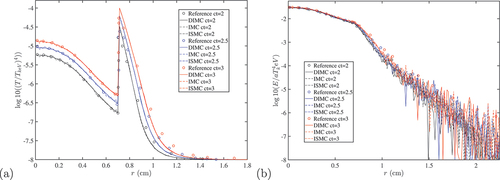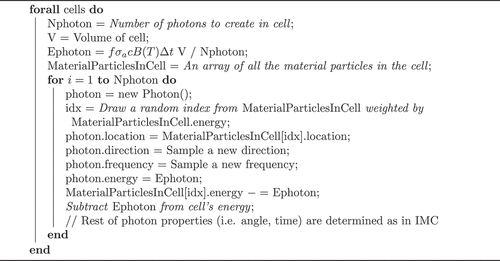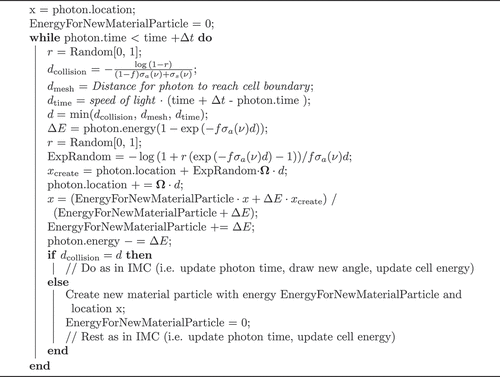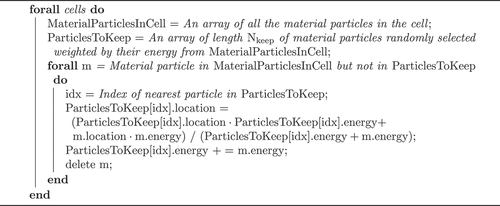Figures & data
Fig. 1. Low-statistic IMC and DIMC runs versus high-statistic ISMC run for (a) the material temperature at different times for the 1-D OlsonCitation32 test problem and (b) the radiation energy density at different times for the 1-D OlsonCitation32 test problem.
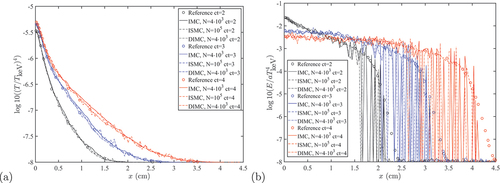
Fig. 2. Material temperature at time ns for the first three Densmore et al.Citation27 benchmarks: (a)
/cm, (b)
/cm, and (c)
/cm.
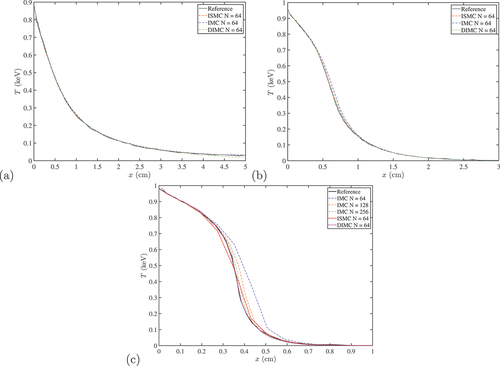
Fig. 3. Material temperature at time ns for the two-media Densmore et al.Citation27 benchmark: (a) zoom out showing the entire domain and (b) zoom in showing the interface between the optically thin and optically thick materials located at
cm.
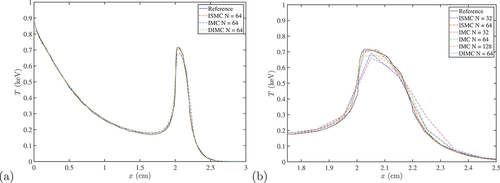
Fig. 4. Geometrical setup for the 2-D frequency-dependent benchmark of Olson.Citation32 The gray squares represent opaque regions.
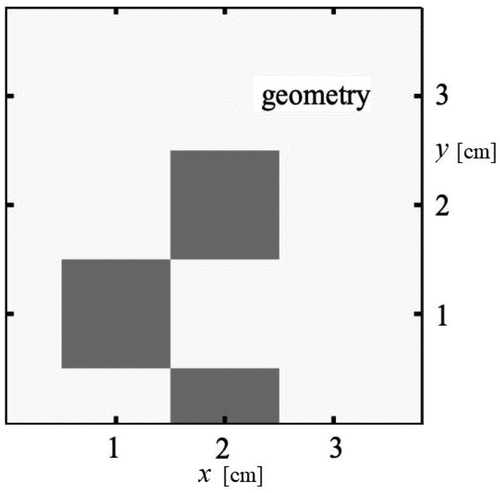
Fig. 5. (a) Contours of the logarithm of the radiation energy density at using the
approximation. Figure (a) is taken from CitationRef. 32. The radiation energy density at
is shown in (b) for the IMC method, (c) for the ISMC method, and (d) for the DIMC method.
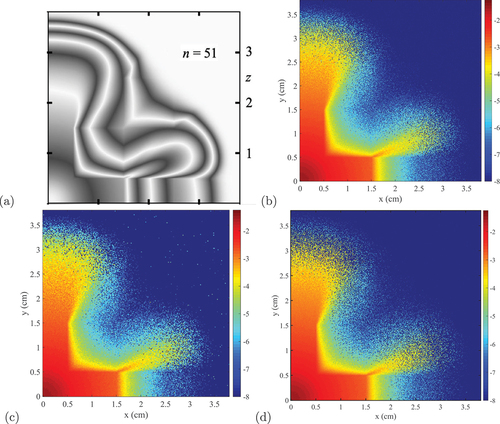
Fig. 6. (a) Material temperatures at different times for the OlsonCitation32 2-D test problem and (b) the radiation energy density at different times for the OlsonCitation32 2-D test problem.
